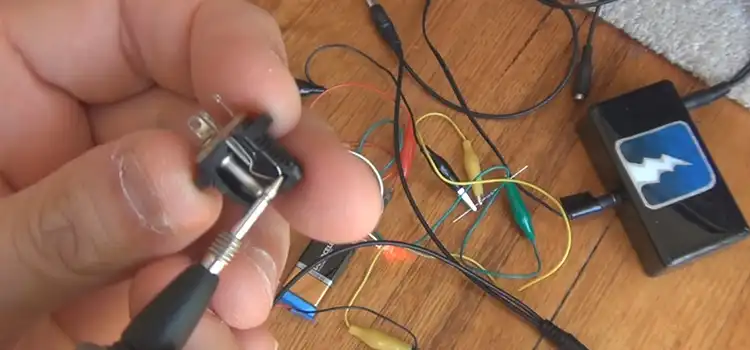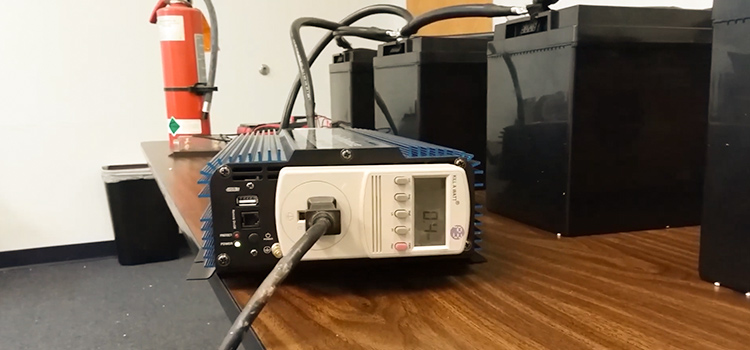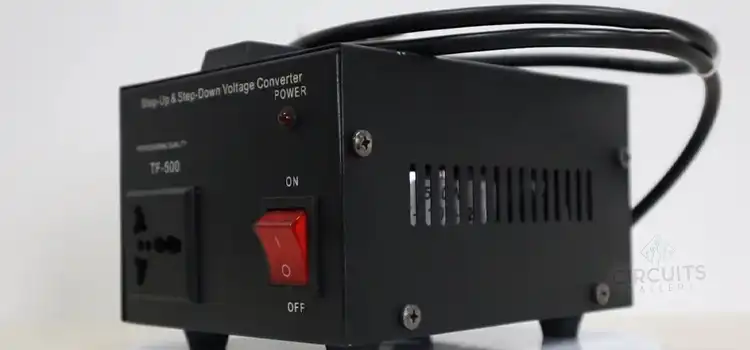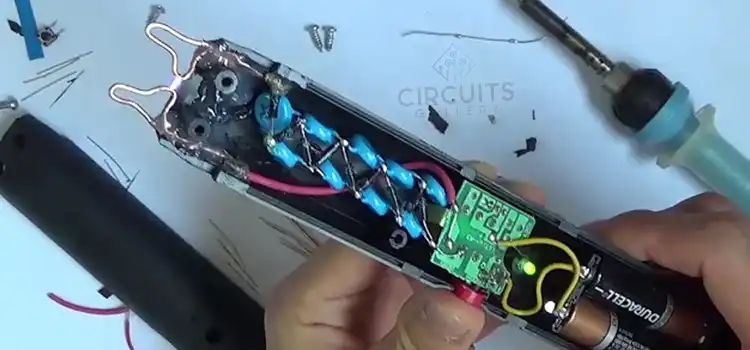[Explained] Which Type of Energy Requires a Closed Circuit?
Electricity has become an integral part of our daily lives. From powering appliances and devices in our homes to enabling communication networks and transportation, we heavily depend on electrical energy. But how exactly does this magical phenomenon of electricity work?
The key lies in understanding electrical circuits. Closed circuits allow a controlled flow of electricity and enable its usage for various applications. In this article, we will understand what closed circuits are, their components, working, and their importance. We will also explore common examples of closed circuits found in households and automobiles.
So read on to uncover the mystic world of closed circuits!
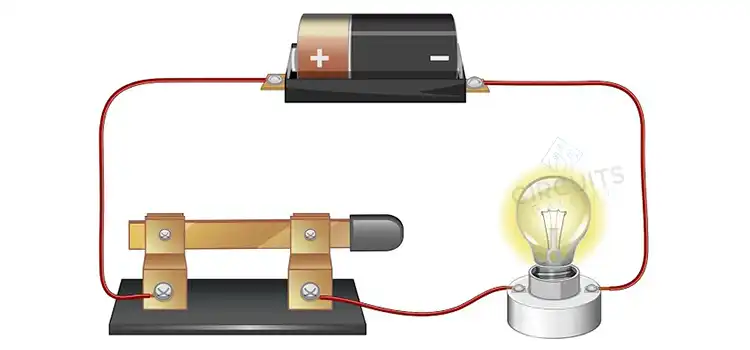
What is a Closed Circuit?
A closed circuit refers to a complete, unbroken looped pathway that allows electric current to flow from the source to the load and back continuously. It provides a route where electrons can move to transfer electrical energy.
The key components that enable this closed-loop flow in a circuit are:
Energy Source
The energy source, such as a battery or power supply, provides the electrical potential difference. This causes electrons to flow from the negative to the positive terminal.
Conductive Path
The conductive path allows electrons to move smoothly. This includes wires, transmission lines, or other conductors.
Load
The load refers to any appliance, device or component that requires power to operate. Electrical energy gets converted for useful work.
Switch
A switch enables control over opening or closing the circuit manually. It completes the loop when turned on.
Diagram of a Simple Closed Circuit
In a closed circuit, turning the switch on provides a continuous pathway so that electrons can move and supply energy throughout. This makes the conversion of electrical energy into light, heat, or motion possible based on the type of load.
Why Are Closed Circuits Important?
Closed circuits are integral to the functioning of various electrical equipment, appliances, and devices. Below are some key reasons depicting their significance:
Powering Electronics and Devices
The continuous electron flow facilitated by closed circuits allows the extraction of energy to power various gadgets and equipment including household appliances, industrial machinery, vehicles, etc.
An open circuit, on the other hand, obstructs this flow leading to the stoppage of electrical devices.
Allows Electricity to Flow Freely
Closed configuration permits unhindered movement of electrons from the supply to other parts of the circuit and back. This energy flow takes place in a streamlined manner without any break.
On the contrary, open circuits prevent the passage of electrons leading to no energy transfer.
Difference from Open Circuits
Unlike a closed format, an open circuit does not allow the free movement of electrons in a loop passage. It has a continuity break because electric current cannot flow through it. For instance, a plugged-out appliance.
Closed circuits hence ensure an efficient distribution of electrical energy through a contained pathway enabling its consumption.
Types of Closed Circuits
Electrical circuits are broadly categorized based on functional complexity as follows:
Household Circuits
The electrical wiring running through our homes comprises many closed circuits linking outlets, appliances, and devices to the main supply. Whether it’s household lighting, kitchen appliances, or electric gadgets – they all rely on small-scale closed loops allowing electricity to flow to and from the domestic power source. Multiple small circuits combine to power homes.
Household Closed Circuit Wiring System
Battery and Device Circuits
Small, portable electronics like cellphones, tablets, watches, and so on rely on tiny closed circuits to function. A battery provides the energy source while components like processors, displays, and speakers act as loads. Integrated, printed closed circuits maintain a flow of electrons between the source and different loads in the device.
Miniaturized Closed Circuit in Battery Powered Device
Complex Circuits
Larger-scale equipment and systems like those in automobiles, airplanes, factories, or power grids feature convoluted combinations of numerous closed circuits. They have distributed sources, extensive distribution networks, and loads. Multiple larger circuits combine to enable smooth electrical distribution at such complex levels. Control systems help regulate flow across integrated closed loops.
Therefore, while household or device circuits handle smaller localized loops, larger industrial setups require complex closed web functioning in harmony.
How Closed Circuits Work
The working of closed circuits centers around below mechanisms:
What Happens When a Switch Closes a Circuit
Closure establishes connectivity enabling electrons to move across full pathway. Electrical resistance causes collisions releasing energy for gadget function.
For instance, turn on a torch light. Switch closes its internal circuit. Electrons flow through wires causing the bulb to emit light.
Flow of Electricity Explained
Electric potential difference across the source makes electrons flow through the interacting circuit elements. This electron motion constitutes the flow of electric current.
It takes place uniformly in a singular direction across the closed conductive pathway depending upon voltage polarity.
Energy Transfer in a Closed Circuit
Continuous electron flow allows efficient electrical transmission from supply to electrical equipment. Collisions across resistive elements produce thermal losses and electromagnetic energy essential for gadget functionality.
For example, the heating effect in toasters, and mechanical motion in motors.
Key Components of Circuits
In addition to the mandatory elements discussed before, a few other components constitute vital cogs for the functioning of closed circuits:
Energy Sources
Electrical energy originates from sources that drive electron motion inducing current flow through connective wires. Apart from the main utility supply from the grid, portable generators, batteries, solar cells, etc. serve as widespread sources.
Conductors, Wires, and Outlets
Metallic wires provide a low resistive connective path to facilitate current flow. Insulated wires prevent short circuits. Wall outlets establish connectivity between wires and equipment.
Resistors, Transistors and Capacitors
Resistors regulate current flow and offer protective impedance. Transistors act like switches to rectify and amplify signals. Capacitors block direct current and permit alternating current passage.
Switches and Relays
Control electron movement acting as manually operated toggles or as automated relay devices respectively for circuit regulation. Help make and break connections.
Comparing Closed and Open Circuits
Below table summarizes the major differences:
| Parameter | Closed Circuit | Open Circuit |
| Current Flow | Permitted | Prevented |
| Continuity | Maintained | Broken |
| Energy Transfer | Takes Place | Absent |
| Electron Movement | Present | Missing |
| Appliance Functioning | Works | Fails |
Effects
When in the closed state, circuits support the functioning of systems they interconnect by maintaining transmission lines for electricity flow without resistance losses.
But open configurations lead to immediate halting of operations due to blockage in supply lines. Electron transport and subsequent power delivery fully stop in loads.
Thus closed circuits facilitate smooth energy distribution optimizing usability unlike open variants prone to disruptions. This makes properly designed closed loops the basis of all modern electrical infrastructures and electronics easing daily functioning.
Examples of Closed Circuits
To help contextualize theoretical concepts we have covered about closed circuits, let us look at some daily life examples:
Light Bulbs and Appliances
A simple light bulb circuit links the bulb filament as a load through switches back to an AC power outlet forming a closed loop. Similar circuits enable household appliances, by powering motor, heating, or lighting loads.
Battery Powered Devices
Small gadgets use a battery source from where current flows through components like processors, screens, and speakers before returning to an integrated device circuit. Larger variants may have additional control loops.
Automotive Circuits
Cars contain more complex circuits linking the alternator source to loads like ignition systems, lighting or sensing gadgets across distribution blocks, and wiring branches with relay controls enabling transportation functioning.
These samples validate how exteriorly visible functioning relies on seamlessly designed closed systems powering our electricity needs without noticeable.
FAQs about Closed Circuits
Q1. What is the purpose of a battery in a circuit?
A battery serves as the energy source inducing electron flow across the connective electric pathway in circuits to facilitate the functioning of attached electrical loads.
Q2. Why are closed circuits required for electricity?
Continuous conductive loops permit regulated movement of electric charges. Open configurations prevent passage blocking electron transfer required for power usage making closed format indispensable.
Q3. What is the difference between direct and alternating current in a circuit?
Direct current (DC) refers to unidirectional electricity flow with constant polarity while alternating current (AC) signifies periodic reversal in direction due to change in voltage polarity over time.
Q4. How do electrons flow in a closed circuit?
Electric potential difference created across circuit extremities by the source makes free electrons move from lower to higher potential through the low resistance path offered by connecting wires.
Q5. What components are required for a functional circuit?
Four imperative elements – electric supply source, conductive wires, electrical load gadgets, and switching mechanism need arrangement in a circular sequence to enable the formation of a workable closed circuit.
Q6. What provides energy to circuits?
Batteries, electric generators, or utility supplies from the grid act as primary energy providers inducing electron motion across connective wires toward electrical loads in a circuit.
Q7. How does current flow in conductors?
Free random motion of electrons facilitates easy movement through the crystalline lattice structure of metallic conductive wires when prompted by an externally applied electric field generating drift velocity.
Summary
To summarize, we learned that a closed circuit comprises a complete, continuous loop that enables sustained electric current flow from an attached energy source through devices and back. This powers the functioning of electronics and equipment.
Unlike open circuits where breaks disturb electricity flow, properly closed variants allow optimal distribution. Components like sources, wires, loads, and switches combine to enable circulation. Controlled electron transport creates current converting energy into electricity.
Hence electrical devices rely on closed circuits for operation through maintained delivery of power. Global infrastructures equally depend on extensive interconnected closed systems for meeting commercial and household needs – truly making them indispensable for the modern world.
Subscribe to our newsletter
& plug into
the world of circuits
![[Explained] What Is the Difference Between Fader and Gain?](https://www.circuitsgallery.com/wp-content/uploads/2023/08/What-Is-the-Difference-Between-Fader-and-Gain.webp)
